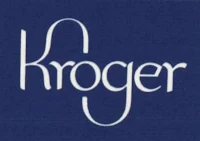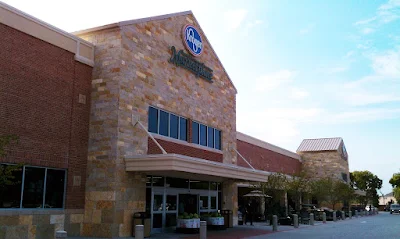The Great Western Tea Company was founded -in Cincinnati- by Bernard Heinrich ("Barney") Kroger and B.A. Branagan. Their first grocery opened in 1882. Mr. Kroger soon bought Branagan's interest. In 1902, the 40-store endeavor was incorporated as the Kroger Grocery & Baking Company.
Photo from The Kroger Company Annual Report 1952
Our earliest Kroger trademark dates to 1917, when the company was overseeing 500 stores. The self-service format had been introduced in the previous year. By 1925, there were 2,856 Kroger markets operating in Indiana, Illinois, Kentucky, Michigan, Missouri, Ohio and West Virginia. The peak number of Kroger stores was achieved in 1929, with 5,575.
Graphic from the Kroger Grocery & Baking Company
By Kroger's 50th Anniversary, in 1932, the chain was overseeing 4,737 grocery stores, with 2,845 having meat departments. These operated in Arkansas, Illinois, Indiana, Kansas, Kentucky, Michigan, Minnesota, Mississippi, Missouri, North Carolina, Ohio, Oklahoma, Pennsylvania, Tennessee, Virginia, West Virginia and Wisconsin.
Photo from The Kroger Company Annual Report 1952During the 1930s, smaller grocery-type stores were being replaced by larger supermarkets. By 1942, the total store count had been reduced to 3,174.
Graphic from the Kroger Grocery & Baking Company
This logo was introduced in 1946, when the business enterprise assumed its current name. The store count now stood at 2,611, with units operating in eighteen states.
Graphic from the Kroger Company
The typical, mid-20th century Kroger supermarket. The trend in the early 1950s was for larger stores, with air-conditioning, self-service meat departments and ample parking. Stores of this size carried all matter of grocery items, as well as specialty delicatessen-type foods. Kroger house brands of the time included Country Club or Avondale canned goods, Latonia Club carbonated drinks and French and Spotlight coffees.
Drawing from the Kroger Company Annual Report 1951
A mid-century homemaker looks over the variety of meats on display. In the mid-1950s, Kroger embarked on an expansion program, with several grocers being acquired. Houston's Henke & Pillot, was brought under the corporate umbrella on May 24, 1955, with Appleton, Wisconsin's Krambo Food Stores joining the fold on June 16. Child's Food Stores, of Jacksonville, Texas, was bought on July 31 of the same year.
Photo from the Kroger Company Annual Report 1949
A new logo made its debut in 1961. Kroger now encompassed 1,354 stores, with their average size being 19,000 square feet. Operations now extended to Alabama, Arkansas, Georgia, Illinois, Indiana, Louisiana, Michigan, Minnesota, Missouri, Mississippi, North Carolina, Ohio, Pennsylvania, South Carolina, Texas, Virginia, West Virginia and Wisconsin. In September 1963, Southern California's Market Basket chain was acquired.
Graphic from the Kroger Company
In the early 1970s, the buzzword at Kroger was "superstore." This new format included delicatessens, bakeries, cheese shops, wine departments and lines of general merchandise. Superstores ranged in size between 25,000 and 42,000 square feet. In 1972, Kroger was operating 1,365 supermarkets, with several being superstores. It was the nation's third-largest food retailer
Photo from The Kroger Company Annual Report 1973
Kroger retreated from cities such as Chicago, Milwaukee, Chattanooga and Pittsburgh during the 1970s and '80s. Mergers were the order of the day in the 1990s and early 2000s. Kroger combined with Oregon's Fred Meyer, Charlotte's Harris-Teeter and Milwaukee's Roundy's. A restyled logo was introduced in 2019.
Graphic from the Kroger Company
Photo from Wikipedia / "Jonesdr77"
KROGER JUNIOR-ANCHORED SHOPPING MALLS:
*SWIFTON CENTER, Cincinnati, OH (1956)
*RIVER ROADS MALL, Jennings, MO (1962)
*SOUTHERN PARK MALL, Mahoning County, OH (1970)
















